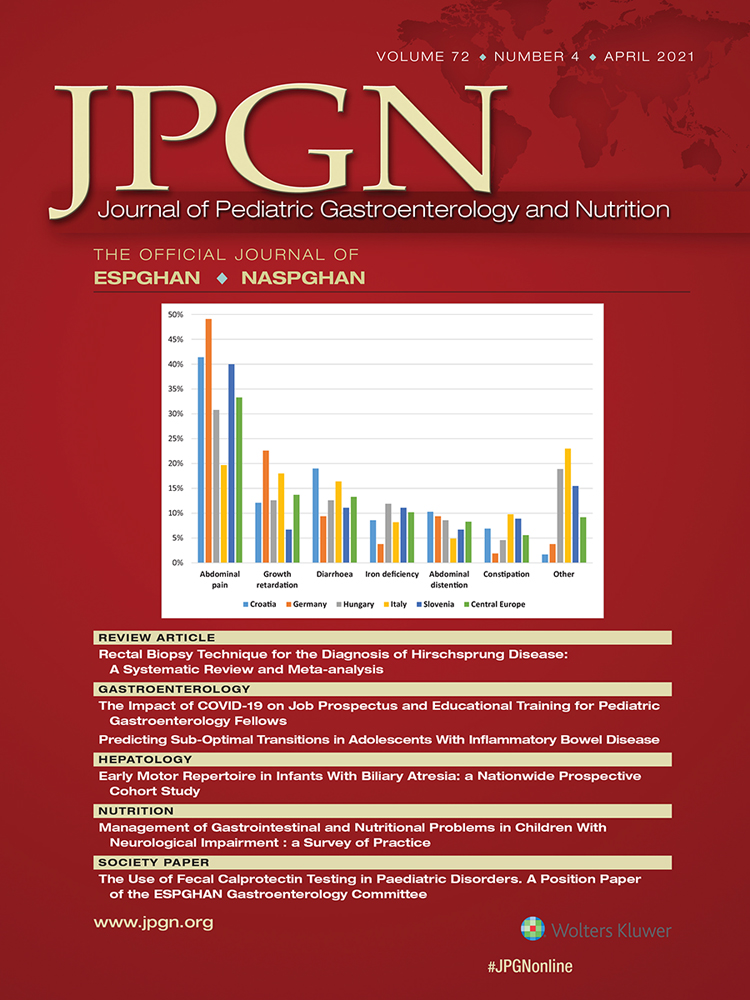Management of Gastrointestinal and Nutritional Problems in Children With Neurological Impairment
A Survey of Practice
Supplemental digital content is available for this article. Direct URL citations appear in the printed text, and links to the digital files are provided in the HTML text of this article on the journal's Web site (www.jpgn.org).
The authors report no conflicts of interest.
ABSTRACT
Objectives:
The main aim of this study was to determine the impact on clinical practice of the first European Society of Gastroenterology, Hepatology, and Nutrition (ESPGHAN) position paper on the diagnosis and management of nutritional and gastrointestinal problems in children with neurological impairment (NI).
Methods:
In this pilot-study, a web-based questionnaire was distributed between November, 2019 and June, 2020, amongst ESPGHAN members using the ESPGHAN newsletter. Fifteen questions covered the most relevant aspects on nutritional management and gastrointestinal issues of children with NI. A descriptive analysis of responses was performed.
Results:
A total of 150 health professionals from 23 countries responded to the survey. A considerable variation in clinical practice concerning many aspects of nutritional and gastrointestinal management of children with NI was observed. The most frequently used method for diagnosing oropharyngeal dysfunction was the direct observation of meals with or without the use of standardised scores (n = 103). Anthropometric measurements were the most commonly used tools for assessing nutritional status (n = 111). The best treatment for gastroesophageal reflux disease (GERD) was considered to be proton pump inhibitor therapy by most (n = 116) participants. Regarding tube feeding, nearly all respondents (n = 114) agreed that gastrostomy is the best enteral access to be used for long-term enteral feeding. Fundoplication was indicated at the time of gastrostomy placement especially in case of uncontrolled GERD.
Conclusions:
More studies are required to address open questions on adequate management of children with NI. Identifying knowledge gaps paves the way for developing updated recommendations and improving patient care.




